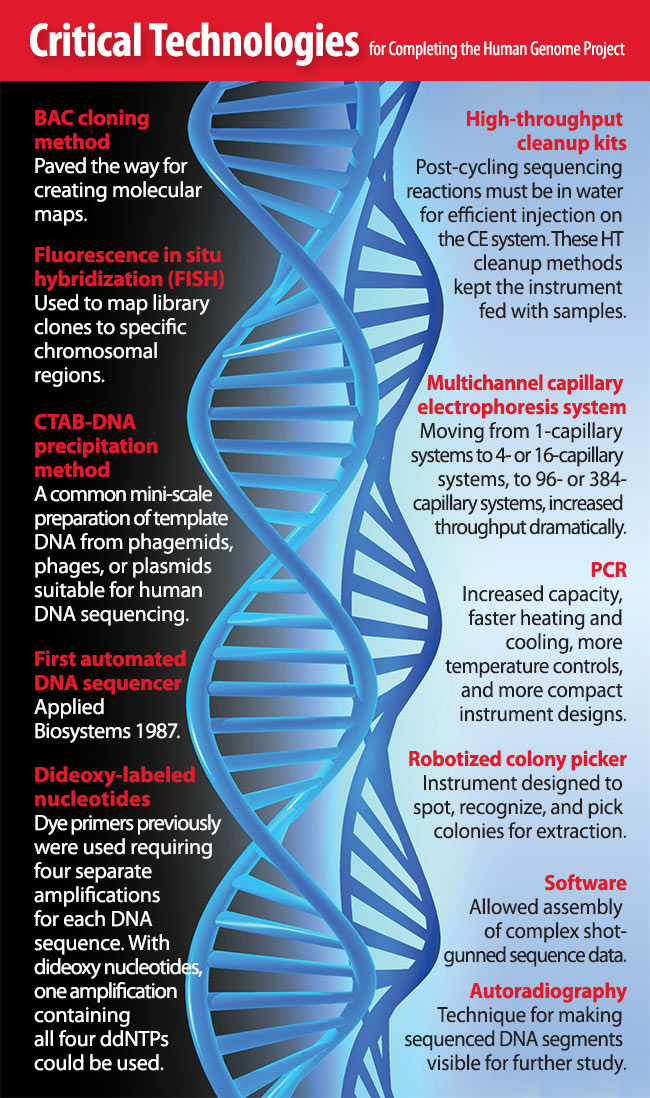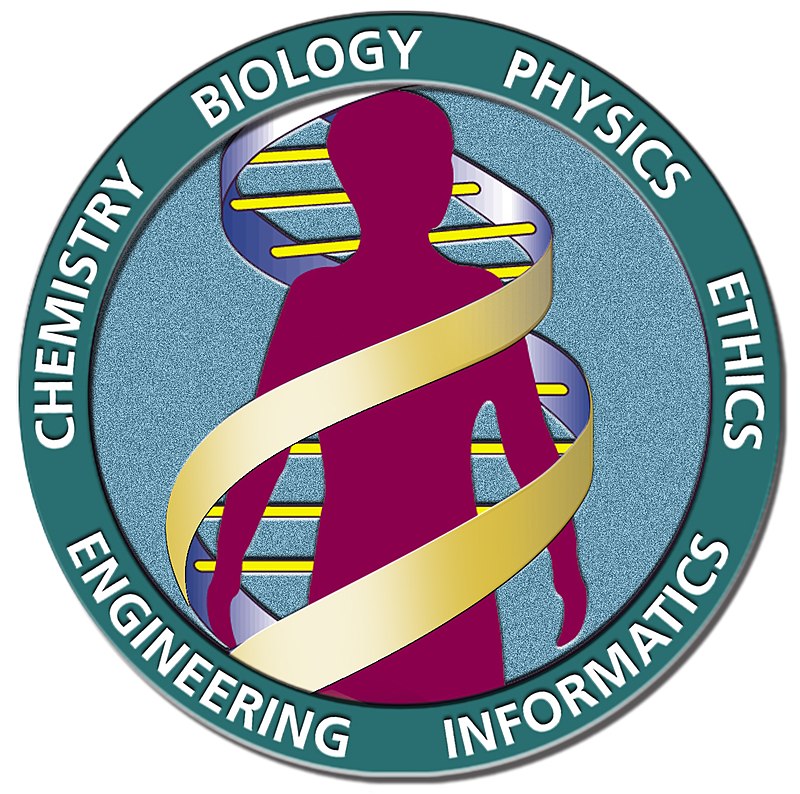Exploring the Dark Side: Uncovering the Scary
I. Introduction I. Introduction for "Dark Web Stories a...
The Human Genome Project (HGP) is an international scientific research project that was launched in 1990 with the aim of decoding the human genome, the complete set of genetic instructions present in every human cell.
The HGP was a massive undertaking, involving thousands of scientists and costing billions of dollars. But it was completed ahead of schedule and under budget, and the results have been nothing short of revolutionary.
The completed human genome sequence has provided researchers with a powerful new tool for understanding the cause of disease, developing new treatments and even predicting individual risk. It has also raised ethical and moral questions about the implications of this knowledge.
The HGP was an international effort, but its roots can be traced back to America. In the late 1970s, two American scientists, Walter Gilbert and Frederick Sanger, developed a new method for DNA sequencing. This was a key breakthrough, as it allowed for the rapid and accurate determination of the order of the four chemical building blocks (or “bases”) that make up DNA.
In 1984, another American scientist, James Watson, published a book called “The Double Helix” in which he described the race to discover the structure of DNA. This sparked public interest in the topic and helped to secure funding for the HGP.
The HGP officially began in 1990, with the goal of completing the sequencing of the human genome within 15 years. However, rapid advances in DNA sequencing technology meant that this goal was achieved ahead of schedule, with the first draft of the human genome sequence being published in 2000.
The release of the human genome sequence has had a profound impact on biomedical research. It has led to the discovery of thousands of new genes, elucidated the function of many existing genes, and provided insights into the evolution of humans and other species.
It has also opened up new avenues for developing new treatments for disease. For example, drugs have been developed that target specific mutations that cause cancer. And researchers are working on ways to use genome editing to repair disease-causing mutations.
The HGP has also raised ethical and moral questions about the implications of this knowledge. For example, should people be told if they have a genetic predisposition to a disease? And how might this information be used to discriminate against people?
These are just some of the ways in which the HGP has changed the world. The full impact of this project is still being felt and will continue to be felt for many years to come.

The Human Genome Project (HGP) was an international scientific effort to sequence the complete human genome, that is, to produce a map of the base pairs of DNA in the human chromosomes, most of which do not vary among individuals. The HGP started in 1990 and was completed in 2003.
The Human Genome Project was a massive undertaking that involved thousands of scientists and cost billions of dollars. But it has yielded an extraordinary payoff: a greater understanding of human biology and the genetic basis of human diseases.
The Human Genome Project has produced a wealth of information about the human genome and its variations. This information is being used by researchers around the world to find genes associated with disease and to develop new treatments and diagnostic tests.
Sequencing the human genome was an immensely complex undertaking. The HGP required the development of new technologies and methods for DNA sequencing and data processing and management.
The Human Genome Project has also had a profound impact on society. The ethical, legal, and social implications of genome research are being widely debated. The availability of genomic information is changing the practice of medicine and raising complex issues about insurance and employment.
The Human Genome Project has been an international scientific endeavor of unprecedented scope and ambition. It is one of the great achievements of science, and it has already begun to transform biology and medicine.

In 1990, the U.S. government established the Human Genome Project (HGP) with the goal of sequencing the entire human genome. The project was managed by the National Institutes of Health (NIH) and involved scientists from around the world. The HGP was completed in 2003, and the results were published in the journal Nature.
The human genome is the complete set of genetic instructions for building a human being. It consists of about 3 billion DNA base pairs, which are the building blocks of DNA. The human genome is organized into 46 chromosomes, which are the structures that carry the genes.
The sequencing of the human genome was a major accomplishment, and it has had a profound impact on biomedical research. The HGP has led to the development of new technologies for sequencing DNA, and it has provided scientists with a wealth of information about the genetic basis of disease.
The Human Genome Project (HGP) was an international scientific research project aimed at decoding the entire human genome. It was a monumental undertaking that involved the efforts of thousands of scientists and took over 15 years to complete.
The HGP was launched in 1990 with the goal of providing a complete map of all the genes in the human genome. This would allow scientists to better understand the role that genes play in health and disease. The project was expected to take about 15 years and cost $3 billion.
The HGP was a massive undertaking that involved the sequencing of over 3 billion base pairs of DNA. This was no easy feat, and required the development of new technologies and approaches.
The project was completed in 2003, ahead of schedule and under budget. The completed genome sequence has been made publicly available and has been used to further our understanding of human biology.
The HGP was an important milestone in our understanding of the human body. It has provided us with a wealth of information that will help us to improve our health and well-being.

The Human Genome Project (HGP) was an international scientific effort to sequence and map the entire human genome. The project began in 1990 and was completed in 2003. The human genome is the complete set of genetic instructions for building a human being.
The HGP was a huge success. It produced a high-quality sequence of the human genome and a comprehensive map of its genes and chromosomes. This information has revolutionized our understanding of human biology and has led to the development of new treatments for diseases.
The human genome is composed of about 3 billion DNA base pairs. The sequence of these base pairs is the human genome’s “blueprint” or “instruction manual.” The HGP produced a complete, high-quality sequence of the human genome.
The HGP also produced a comprehensive map of the human genome’s genes and chromosomes. This information is essential for understanding the function of each gene and the genetic basis of diseases.
The HGP has led to the development of many new treatments for diseases. For example, the gene for Huntington’s disease was identified through the HGP. This knowledge has allowed scientists to develop new treatments for Huntington’s disease.
The HGP was an amazing achievement. It produced a high-quality sequence of the human genome and a comprehensive map of its genes and chromosomes. This information has revolutionized our understanding of human biology and has led to the development of new treatments for diseases.
The Human Genome Project (HGP) is an international scientific research project that aims to determine the base pairs that make up human DNA, and to identify and map all of the genes of the human genome. The completed genome sequence will be a valuable resource for researchers studying the causes and treatments of human diseases.
The HGP began in 1990 and is expected to be completed in 2003. However, the implications of the project are far-reaching, and will continue to be felt for many years to come.
One of the most significant implications of the HGP is the potential for personalized medicine. By knowing an individual’s complete genetic code, doctors will be able to tailor treatments to that person’s specific needs. This could potentially revolutionize the way we treat diseases, as well as how we prevent them.
Another implication of the HGP is the ethical and legal implications of having this information available. For example, insurance companies could potentially use an individual’s genetic information to deny coverage or charge higher premiums. There are also concerns about discrimination based on genetic information, and about who should have access to this information.
All of these implications underscore the need for continued public education about the HGP and its implications. As the project nears completion, it is important that we discuss these issues openly and honestly, so that we can make the most of this incredible opportunity.

of Genetics
The Human Genome Project was a 13-year project that aimed to sequence the entire human genome. Completed in 2003, the project has had a number of implications for the field of genetics.
Perhaps the most significant implication of the Human Genome Project is the increased understanding of human genetics that it has facilitated. The project has allowed researchers to identify and study the genes that are responsible for a variety of diseases. This knowledge can be used to develop new treatments and therapies for genetic diseases.
The Human Genome Project has also had a impact on the field of personalized medicine. By identifying the genes that are associated with various diseases, the project has made it possible to develop individualized treatments for each patient. This approach to medicine is becoming increasingly common, and is likely to become even more widespread in the future.
The Human Genome Project has also had an impact on our understanding of human evolution. By sequencing the human genome, researchers have been able to study the genetic differences between different populations. This information can be used to better understand how humans evolved and how different populations are related to one another.
The Human Genome Project was a landmark achievement in the field of genetics. It has had a number of significant implications for the future of the field, including increased understanding of human genetics, the development of personalized medicine, and our understanding of human evolution.
You cannot copy content of this page